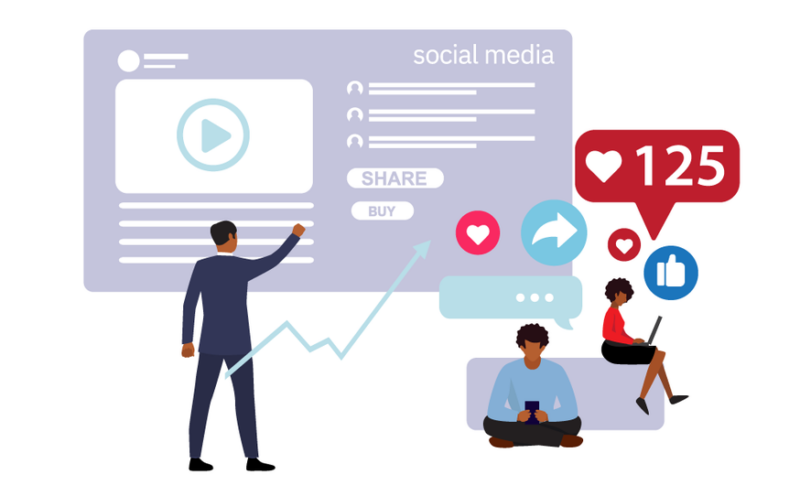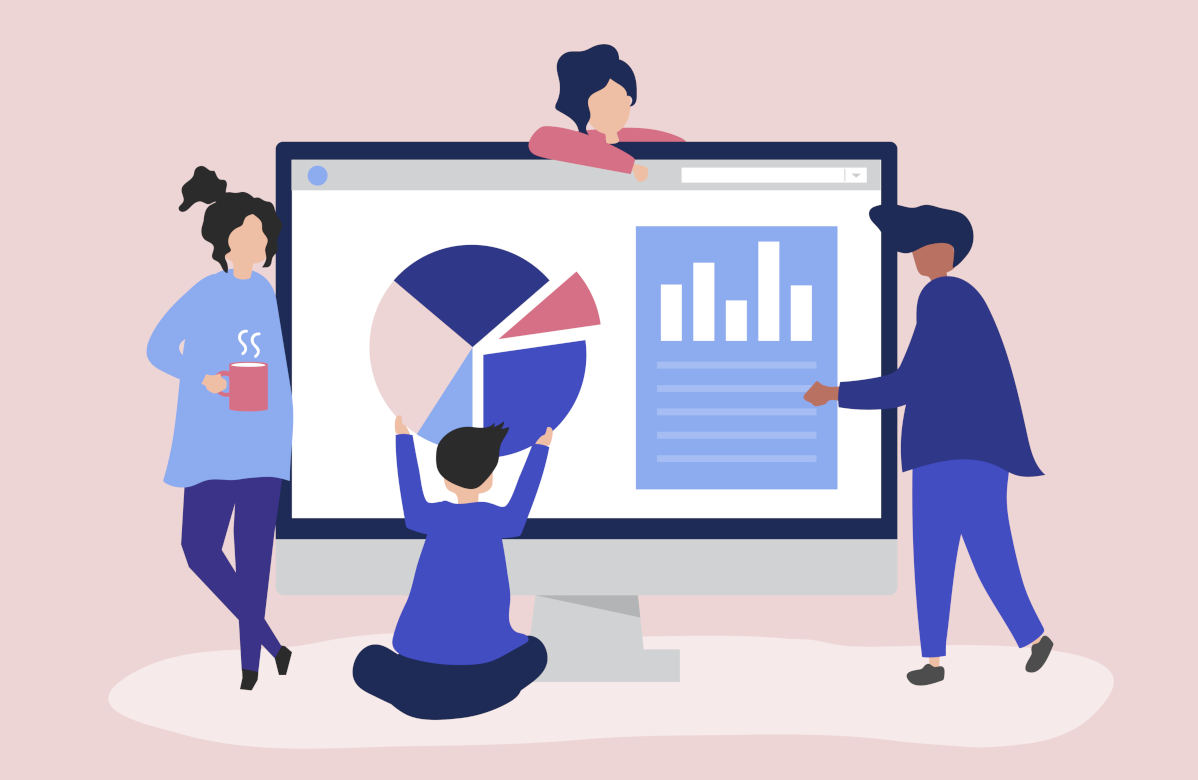In today’s world, businesses need to keep a close eye on what their customers are saying online. With the advent of social media, consumers have an unprecedented ability to voice their opinions about brands and products. This has given rise to a new field of marketing known as social listening analytics. In this article, we’ll explore what social listening analytics is, why it’s important, and how businesses can use it to gain insights into their customers’ conversations online.
What is Social Listening Analytics?

Social listening analytics is the process of monitoring social media channels and other online platforms to identify and analyze conversations about a brand, product, or service. This data can then be used to understand consumer sentiment, identify trends, and inform marketing strategies.
Social listening analytics tools use machine learning algorithms to analyze social media posts, comments, and other online content to identify patterns and themes. These tools can also provide sentiment analysis, which measures the tone of online conversations about a brand, product, or service. By analyzing these conversations, businesses can gain valuable insights into what their customers are saying about them and what they want.
Why is Social Listening Analytics Important?

Social listening analytics is important for several reasons. First, it provides businesses with a way to understand what their customers are saying about them online. This can help them identify areas where they are doing well and areas where they need to improve. By understanding their customers’ needs and concerns, businesses can develop products and services that better meet their customers’ needs.
Second, social media listening analytics can help businesses identify trends and emerging issues. By monitoring online conversations, businesses can identify new trends and potential issues before they become widespread. This can help businesses stay ahead of the curve and respond proactively to changing market conditions.
Finally, social listening insights can help businesses measure the impact of their marketing efforts. By monitoring social media channels, businesses can track the reach and engagement of their marketing campaigns. This can help them identify which campaigns are most effective and adjust their strategies accordingly.
How Can Businesses Use Social Media Listening Analytics?

There are several ways that businesses can use social listening insights to gain insights into their customers’ conversations online. Here are some examples:
- Monitor brand mentions: By monitoring social media channels for brand mentions, businesses can identify areas where they are doing well and areas where they need to improve. They can also respond to customer complaints and concerns in real-time, which can help improve customer satisfaction.
- Identify influencers: Social listening insights tools can help businesses identify influencers in their industry. By partnering with influencers, businesses can reach new audiences and build brand awareness.
- Track sentiment: By tracking sentiment, businesses can identify the tone of online conversations about their brand, product, or service. This can help them identify areas where they need to improve and respond to negative sentiment in real-time.
- Identify emerging issues: By monitoring online conversations, businesses can identify emerging issues and potential trends. This can help them stay ahead of the curve and respond proactively to changing market conditions.
- Measure marketing impact: By monitoring social media channels, businesses can track the reach and engagement of their marketing campaigns. This can help them identify which campaigns are most effective and adjust their strategies accordingly.
Benefits
1. Customer Insights
Social listening provides valuable insights into customer preferences, pain points, and behaviors, allowing businesses to tailor their products and services accordingly.
2. Brand Reputation Management
By monitoring brand mentions and sentiment, businesses can quickly address any negative feedback or PR crises, preserving their reputation.
3. Competitive Analysis
Social listening allows businesses to keep tabs on their competitors, identifying strengths, weaknesses, and market opportunities.
Implementing Social Listening Analytics Tools
Choosing the right social listening tools is crucial for success. Factors to consider include the platforms you want to monitor, the volume of data you expect to analyze, and your budget.
Strategies for Effective Social Listening
1. Identifying Key Metrics
Determine which metrics are most important to your business goals, whether it’s sentiment analysis, engagement rates, or customer demographics.
2. Engaging with Audience
Social listening is not just about monitoring; it’s also about engaging with your audience. Respond to comments, answer questions, and participate in conversations to build stronger relationships.
3. Responding to Feedback
Whether it’s positive or negative feedback, responding promptly shows that you value your customer’s opinions and are committed to addressing their concerns.
Case Studies
Example 1: Starbucks
Starbucks uses social listening to gather feedback on new products, identify emerging trends, and engage with customers on a personal level.
Example 2: Nike
Nike leverages social listening to track brand sentiment, monitor competitor activity, and identify influencers for marketing campaigns.
Challenges
1. Data Overload
With the sheer volume of data available, businesses may struggle to filter out the noise and focus on actionable insights.
2. Sentiment Analysis Accuracy
Automated sentiment analysis tools may not always accurately gauge the tone of online conversations, leading to misinterpretation of data.
Future Trends
1. AI Integration
Artificial intelligence will play a larger role in social listening, offering more advanced analysis and predictive capabilities.
2. Real-time Monitoring
Businesses will increasingly demand real-time social listening capabilities to respond quickly to emerging trends and crises.
3. Predictive Analysis
Social listening tools will evolve to offer predictive insights, allowing businesses to anticipate customer needs and market trends.
Conclusion
In conclusion, social listening insights can provide businesses with valuable insights into their customers’ conversations online, which can help them improve customer satisfaction, build brand awareness, and stay ahead of the competition.
If you’re interested in learning more about social listening analytics and how it can benefit your business, we encourage you to request a demo from AIM Technologies. With our powerful social listening analytics tools, you can gain a deeper understanding of your customers’ needs and preferences, and develop marketing strategies that resonate with them.
FAQs
How do social listening analytics differ from social media monitoring?
- Social media monitoring typically involves tracking mentions of a brand or keyword, while social listening goes beyond that to analyze sentiment, trends, and customer behavior.
What are some common mistakes businesses make when implementing social listening analytics?
- One common mistake is not defining clear goals and metrics for social listening efforts. Another is relying too heavily on automated tools without human interpretation.
How can small businesses benefit from social listening analytics?
- Even small businesses can benefit from social listening by gaining insights into customer preferences, market trends, and competitor activity.
What are some free social listening tools available for businesses?
- Some free social listening tools include Google Alerts, Hootsuite, and TweetDeck, although they may have limitations compared to paid options.
How often should businesses review social listening data?
- The frequency of social listening analysis depends on factors such as the volume of conversations, the pace of industry trends, and the urgency of any issues or opportunities identified.


